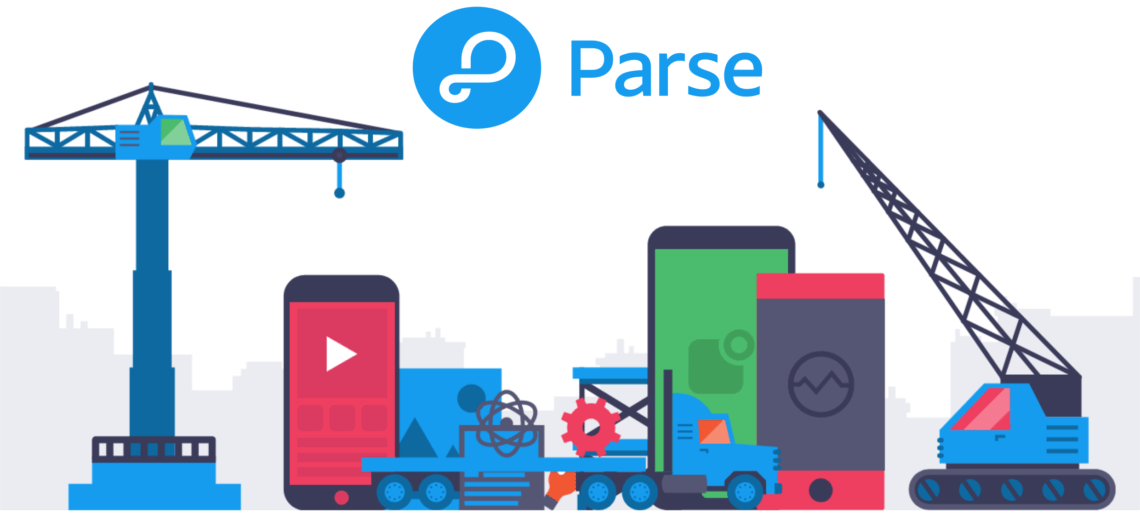Parse Backend as a Service

If you are a developer, you must have coded your way through a mobile or web app at least once. This article delves into the technicalities of Parse Server. If you have never heard its name, enlighten yourself, for it’s worthy of your interest and time.
Contents
What is Parse?
Parse Server is an open-source BaaS (Backend-as-a-Service) framework. In 2013 it was acquired by Facebook. After the shutdown of the hosted service, Parse was open-sourced, and now it has its documentation, blog, and community forum. The developers consistently strive to innovate and improve the already modular and impressive platform.
Today, every application stores data and offer a specific set of services to the users. All details and associated data have to be stored somewhere on the Internet to communicate with the application’s users. For this reason, having a complementary server-side app is essential.
Before Parse was introduced, developers had to create their own individual backend for all apps. The method was not time-efficient, simple, and demanded expertise across different disciplines. Such disciplines were network maintenance, server-side development, front end development, designing, and scaling. A single developer found this approach extremely difficult for creating a product all on his own. In case he managed to develop the product somehow, dynamic scaling turned out to be a big issue. All of this made developing apps a tedious and challenging process.
This was when Parse entered the arena of app development as a blessing to the developers.
Parse Advantages
Everything that a developer requires to keep and maintain data in a secured and efficacious manner over the cloud is handled by Parse. The types of data are text, string, audio, photo, etc. To ease the use of Parse, a dashboard including a graphical user interface is present.
Parse lets developers focus on providing a great user experience and not worrying about back-end maintenance and complicated infrastructure.
It can be hosted anywhere: Additionally, you can run several instances in various regions to serve a global audience.
You can create and test your app locally. If you come across a typo and correct it, you need not deploy it to the cloud. With Parse Server, the testing cycle time is close to zero.
Developers can connect users through social media sites (Facebook and Twitter) with the help of a few programming code lines. Since Parse links account across networks, resets passwords, and keeps everything secure and safe, developers do not have to worry about anything.
With the help of Parse, developers can add realtime updates to an app. Also, it’s possible to send push-notifications.
What is Backend as a Service?
BaaS (Backend-as-a-Service) is a cloud service model in which developers outsource all the behind-the-scene aspects of a mobile or web application. As a result, developers have to write and maintain frontend solely. BaaS vendors offer pre-written software for activities that occur on servers. Such server-side capabilities include database management, user authentication, push notifications (for mobile apps), and remote updating, besides hosting and cloud storage.
The basic pillar for BaaS is “API-first” development. This means that an API is first constructed. Then, it is used as a base to create various mobile platforms (Android, IoS, etc.). Developers make use of SDKs (kits for creating software) and APIs offered by BaaS vendor to integrate all the necessary backend functionality without developing the backend themselves. Also, they can avoid managing servers, containers or virtual machines that are important for running the application. This results in faster development and the launch of the web and mobile applications.
Backend as a Service Benefits
Mobile and web applications have similar attributes behind the screen, such as social media integration, instant messaging, and cloud storage. Each service has an API that has to be connected in an application one by one. For developers, this can turn into a complex and time-consuming procedure. Over the years, the BaaS approach, which is API-based, will offer third-party services as a backend function, with users developing platform-specific apps on a reusable base. Some of the advantages of using a BaaS are as follows:
Reusable Building Blocks
Each user considers a BaaS as the ‘home’ and starts off with the same elements. To create their own tailormade ‘home’, they add to those elements. But, since the base elements are the same, other users can more conveniently understand and communicate with or mend the ‘house’. The result – the developers can come up with a unified backend, featuring a stronger and better user base.
Better Accessibility
In case each app that is being developed has the same base, a BaaS has the ability to link apps across platforms in a hassle-free way. The resulting advantages are many, ranging from better accessibility to better sharing of data, a quicker spin-up time, and altogether better user experience.
Checks Stack Developed Unnecessarily
Rather than several developers recreating a stack for every mobile app they develop, a BaaS service can help with much of their processing needs. Then, the primary issue would be to connect with an app, in contrast to spending hours creating customized stacks that have to be created again, changed, and reassembled so that they fit each application platform’s requirements. On top of the existing construction, developers can build whatever they want rather than begin from scratch every time.
Conclusion
Parse is a great way to start using a BaaS. It’s open-source, has a low learning curve, and is used by thousands of developers. It helps developers and companies accelerate backend development and remove the hassles of creating boilerplate code and reinventing the wheel.
FAQ
What is Parse?
Parse Server is an open-source BaaS (Backend-as-a-Service) framework.
What is a Backend as a Service?
It is a cloud service model in which developers outsource all the behind-the-scene aspects of a mobile or web application.
Why use Parse?
– It’s open-source
– Has no vendor lock-in
– It accelerates backend development
– It remove the hassles of creating boilerplate



